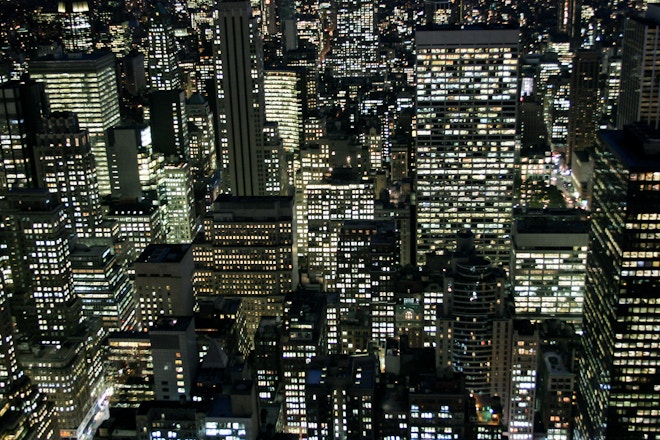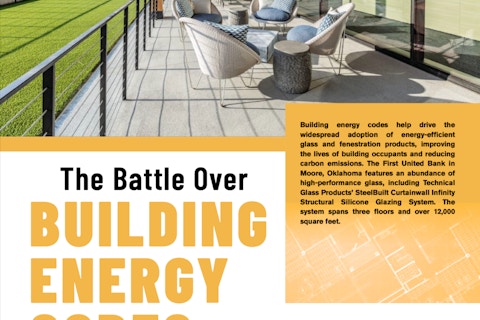Carbon crisis: The embodied carbon challenge
Climate scientists have been warning us for years, of course, that we are approaching a tipping point -- a moment when some nasty feedback loops would kick in to accelerate global warming dramatically, and the result would be a drastic increase in the occurrence of extreme weather events floods, fires, hurricanes and the like.
At a specific moment this past summer I began to believe that we are now at that tipping point, if not past it. Our behavior, our decisions in the next few years are crucial if we are to limit the damage from climate change in the next century. And the largest contributor to climate change are carbon emissions from the built environment. We know how to fix this. We know the available solutions. Now we need to act -- fast and on a massive scale. We need to demand buildings that support rather than threaten human existence.
By one estimate, the world will add two trillion square feet of buildings by 2060—the equivalent of putting up another New York City – all five boroughs – every 35 days for the next 40 years.
Forty percent of energy-related carbon emissions come from buildings and infrastructure, making and using them, including 5% from one material alone: cement. Seventy five percent of U.S. buildings require renovation to meet emission standards necessary to mitigate climate change.
By 2060, we’ll have over 10 billion people on planet Earth. As the global population rises, urban areas around the world are booming, and that means more and more buildings are going up. By one estimate, the world will add two trillion square feet of buildings by 2060—the equivalent of putting up another New York City – all five boroughs – every 35 days for the next 40 years.

The carbon impact of projected building development over the next 40 years represents an existential threat to humanity.
By 2060, we’ll have over 10 billion people on planet Earth. As the global population rises, urban areas around the world are booming, and that means more and more buildings are going up. By one estimate, the world will add two trillion square feet of buildings by 2060—the equivalent of putting up another New York City – all five boroughs – every 35 days for the next 40 years.
We are in the middle of the most massive building spree our planet has ever known. If we keep building them the way we always have, buildings will be one of the ways we are destroying our ability to live on the planet.
...facade designers can be the critical agents who facilitate and lead change in a risk-averse industry by exploring the intersections of art, science, technology, and education at the building skin.
The materials we make buildings out of today have a massive carbon footprint. When we make cement by heating limestone to 2200 degrees Fahrenheit, we send carbon dioxide into the atmosphere. When we ship a steel beam or block of granite across an ocean, we send carbon dioxide into the atmosphere. When we use fossil-fuel-generated energy to manufacture glass or aluminum or exterior insulation and finish systems (EIFS), we send carbon dioxide into the atmosphere.
But this moment can also be a tipping point in human consciousness and behavior. And facade designers can be the critical agents who facilitate and lead change in a risk-averse industry by exploring the intersections of art, science, technology, and education at the building skin. We can change how we make and use traditional materials like steel and concrete so they are responsible for far lower carbon emissions. And we can use transformative materials like earthen slabs, straw bales, algae, mycelium, soil, bamboo, other agricultural waste -- biogenic materials that actually pull carbon out of the atmosphere and store it in buildings.
The focus of this issue of SKINS is on embodied carbon -- the carbon dioxide (CO₂) emissions associated with materials and construction processes throughout the whole lifecycle of a building or infrastructure. To radically reduce embodied carbon will require the reuse and recycling of buildings and materials wherever possible, and the transformation or replacement of materials with the largest carbon footprint. So this issue of SKINS provides a set of educational and practical articles to help you begin the journey toward facades that are core to buildings pivoting from existential threat to climate change solution.
Meghan Lewis’ paper EC101 provides a headstart on the fundamentals of embodied carbon, and is a component of the Carbon Leadership Forum’s Embodied Carbon Policy Toolkit.
Vaclav Hasik, program manager for Building Transparency, provides an in-depth look at the Embodied carbon impact of facade systems, describes how facade designers can begin using tools like EC3 with almost 1,300 Environmental Product Declarations (EPDs) related to facade systems currently in its database, spanning categories such as masonry, cladding, thermal and moisture protection, openings, and others.
Laura Karnath is Senior Technical Designer in Walter P Moore's Los Angeles Enclosure Group, and we’re excited to point you to her excellent article Embodied Carbon in Building Enclosures: Why It Matters.
And finally, this spring Payette updated its new open source web-based tool, Kaleidoscope: Embodied Carbon Design Tool, to bring embodied carbon further into the design process. Thanks to the development team of Denise Blakenberger, Melanie Silver, and Becca McGee Sturgeon, we now have a simple, straightforward tool to quickly make apples-to-apples comparisons of typical building systems for use in early design decisions without the need for a 3D model. Please read Becca’s article, “Kaleidoscope: Bringing the Lens of Embodied Carbon to the Early Design Process” for an insider’s look at how facade designers can play a crucial role in reducing embodied carbon.
At the Carbon Leadership Forum, our mission is to eliminate embodied carbon in buildings and infrastructure by inspiring innovation and spurring change through collective action. We firmly believe it will take thousands of knowledgeable, passionate, and committed building industry professionals collaborating to make it happen.
We invite you to contribute your ideas, your imagination, your tools, resources, and expertise to the broader movement to transform our industry. Join the online CLF Community! As Martin Luther King, Jr. said, “Almost always, the creative dedicated minority has made the world better.”
Warm regards,
Andrew Himes, Carbon Leadership Forum
Guest Editor, SKINS Issue #124, August/September 2021
Great thanks to Andrew from all of us on
The SKINS Team:
Mic Patterson, Facade Tectonics Institute
Executive Editor
Val Block, Facade Tectonics Institute
Associate Editor
Brienna Rust, SGH
Christopher Payne, Gensler
Content Editors
Nick Carrillo, WWCCA
Event Calendar Editor
Alberto Alarcon, Kuraray
Event Calendar Editor

Andrew Himes
Carbon Leadership Forum
Andrew Himes is director of collective impact at the Carbon Leadership Forum at the University of Washington, leading industry-wide initiatives to reduce embodied carbon emissions from built environments. In the late 80s, Himes was the founding editor of MacTech, still the leading Apple technology journal, then co-founded the Microsoft Developer Network, and led the first web development project at Microsoft. In the 2000s, Himes was founding director for the Charter for Compassion International, and then was a partner in Carbon Innovations LLC, a social impact consultancy focused on business-based solutions to climate change.
Looking for something specific?
Search our extensive library.
FTI’s SKINS email is the central source for the latest in building skin trends and research.
All emails include an unsubscribe link. You may opt out at any time. See our privacy policy.









